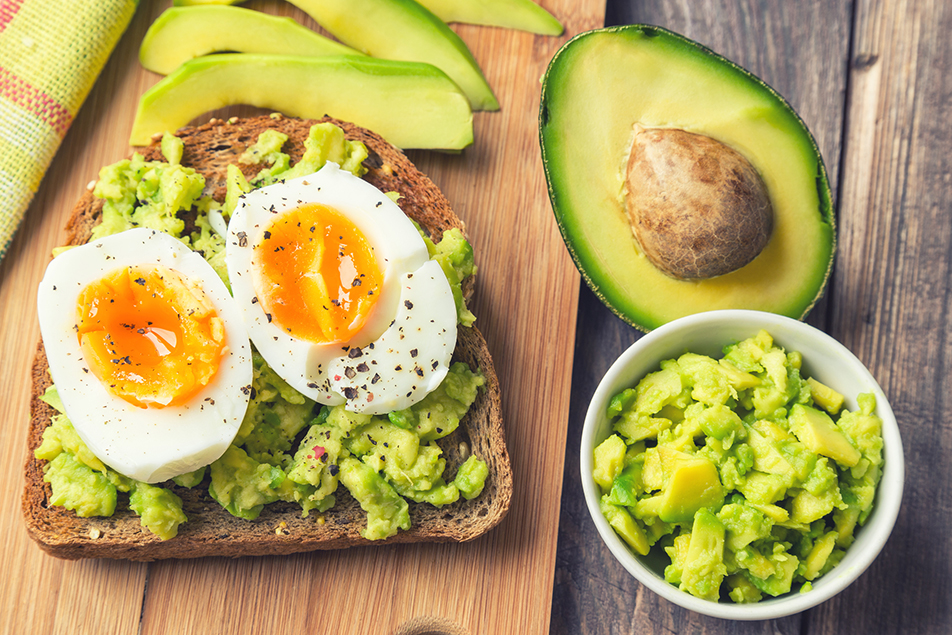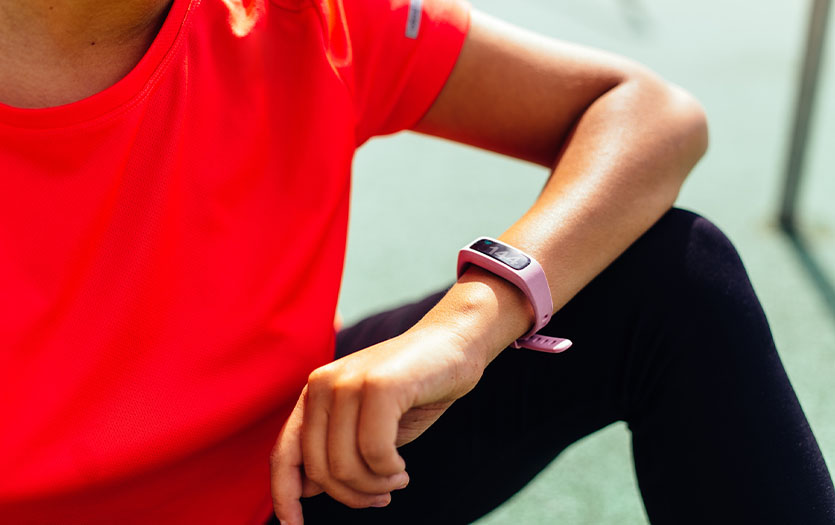
This post was written by Carol Garrean, MD, section chief, PPG – Internal Medicine, with input and recipes from Michelle Bojrab-Wray, MS, RDN, LD, FAND, community outreach dietitian.
Breakfast isn’t just the first meal of the day. It’s also an important tool for balancing blood sugar levels and minimizing your blood sugar highs and lows.
A crash course in carbs
When it comes to blood sugar, most people don’t understand the role of carbohydrates. The goal is to choose carbs that are nutrient-dense, which means they are rich in fiber, vitamins and minerals, and low in added sugars, sodium and unhealthy fats. When choosing carbs, the key is choosing complex carbs —the ones that give you the most bang for your buck in terms of vitamins, minerals and fiber.
Complex carbohydrates are digested slower, therefore they are less likely to cause a rapid spike in your blood sugar like refined carbohydrates. Examples are whole grains and legumes.
When choosing carbohydrate foods:
Eat the most of these: Whole, unprocessed, non-starchy vegetables. Non-starchy vegetables like lettuce, cucumbers, broccoli, tomatoes and green beans have a lot of fiber and very little carbohydrate, which results in a smaller impact on your blood sugar. Remember, these should make up half your plate according to the Plate Method!
Eat some of these: Whole, minimally processed carbohydrate foods. These are your starchy carbohydrates, and include fruits like apples, blueberries, strawberries and cantaloupe; whole intact grains like brown rice, whole wheat bread, whole grain pasta and oatmeal; starchy vegetables like corn, green peas, sweet potatoes, pumpkin and plantains; and beans and lentils like black beans, kidney beans, chickpeas and green lentils. If you’re using the Plate Method, foods in this category should make up about a quarter of your plate.
Try to eat less of these: Refined, highly processed carbohydrate foods and those with added sugar. These include sugary drinks like soda, sweet tea and juice, refined grains like white bread, white rice and sugary cereal, and sweets and snack foods like cake, cookies, candy and chips.
Plan ahead for success
No matter how many times we hear how important breakfast is, it’s still hard to make it a priority on a busy morning. Prepping your breakfast ahead of time means you can eat in a snap in the morning, or grab it on your way out the door.
Remember, what you eat for breakfast is just as important as if you eat breakfast! Here a few tips to help you choose a healthy breakfast:
- Stay away from foods with lots of sugar and refined grains. These will cause a sharp spike in blood glucose and won’t keep you feeling full for very long.
- You don’t have to ditch all carbs in the morning — whole grains, fruit, and milk can be great breakfast options, even though they contain carbs.
- Try to get some extra protein or fiber in your breakfast. These will help slow the rise in blood glucose, and they will keep you full and satisfied until lunch.
Recipes
Here are a couple simple summer breakfast ideas to try that will keep you satiated and on track.
Overnight oats
This is one of my favorite summer breakfast ideas. I frequently make five jars of overnight oats on Sunday so I’m set for the week. You can make them all the same or add some variety by putting in different toppings. The combination of oats, milk and yogurt serves as the base.
1/3 cup oats (not the instant type)
1/3 cup milk or unsweetened nut milk
1/3 cup plain yogurt (use Greek for higher protein)
1 teaspoon natural nut butter (peanut, almond or cashew butter)
¼ to ½ cup of chopped apple (green apple for tartness, or honey crisp for sweeter taste)
1. Combine all the above in a mason jar or bowl.
2. Cover and store in fridge overnight. Voila! It’s ready for you in the morning.
During colder months, simply make it in a microwave-safe container and heat it up for 30-60 seconds if you prefer a warm breakfast.
If you are not a fan of nut butter or apple, here are a few other healthy topping suggestions:
- ½ cup chopped berries, or ½ banana
- 1 tablespoon dried cranberries or raisins
- ¼ teaspoon cinnamon
- 1-2 tablespoons chopped nuts
- Drizzle of honey or maple syrup
Yogurt parfait
This is another summertime favorite. You can prepare and store each ingredient in the fridge. It takes less than 5 minutes to assemble the parfait each day. Assembling and eating it right away helps keep the granola clusters crunchy.
1 cup plain Greek yogurt (nonfat, 2% or 5%) with a light drizzle of honey stirred in
1 cup chopped fresh fruit of your choice (strawberries, raspberries, blueberries, pineapple and peach are all excellent options)
½ -1 cup low fat granola clusters
1. In a mason jar or glass, alternate layers of yogurt, fresh fruit and granola until the jar or glass is full. Your breakfast is now ready to eat!



